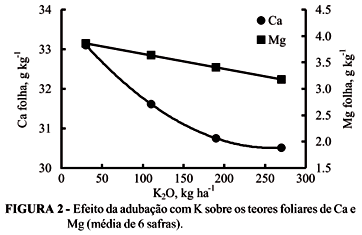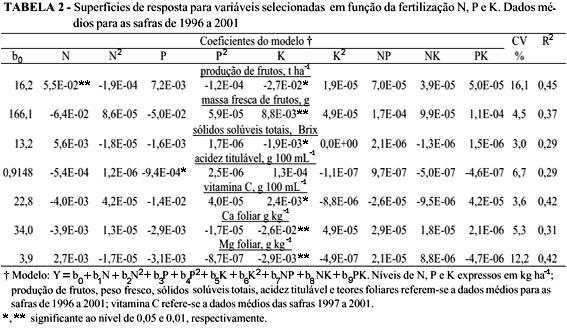The Brazilian production of mandarins and 'Murcott' tangor has increased during the 1990's due to superior value of fruit for commercialization and higher resistance to citrus diseases, i.e.: citrus variegated chlorosis, compared to sweet oranges. On the other hand, there is a lack of information to establish optimum nutrient requirements for such varieties. Therefore, the present work aimed to study the response of 'Murcott' trees to NPK and their interactions to establish fertilizer rates for maximum fruit yield and superior quality, and to define diagnostic criteria based on leaf analysis for best nutrient management. The experiment was conducted for six-years in a commercial orchard of 4-yr-old 'Murcott' tangor on Rangpur lime rootstock, which was arranged in a fractional factorial design of the ½ (4³) type. Treatments consisted of four rates of N (30, 100, 170, and 240 kg N ha-1), P (20, 80, 140, and 200 kg ha-1 de P2O5), and K (30, 110, 190, and 270 kg ha-1 de K2O). Fruits, measuring about 3-cm diameter, were thinned yearly to maintain a minimum distance of 20-cm between them in the canopy. Average fruit yield increased with increased N rates and decreased with K rates. There was no significant response of P fertilization on fruit yield. Maximum fruit yield was attained at fertilizer rates of N = 155, P2O5 = 20, and K2O = 30 kg ha-1, whereas optimum fruit size was attained at K2O =& 270 kg ha-1. Tree growth and other fruit quality characteristics were evaluated, as well as the criteria for interpretation of leaf analysis.
citrus; nutrition; fertilization; soil and leaf analyses; fruit quality




